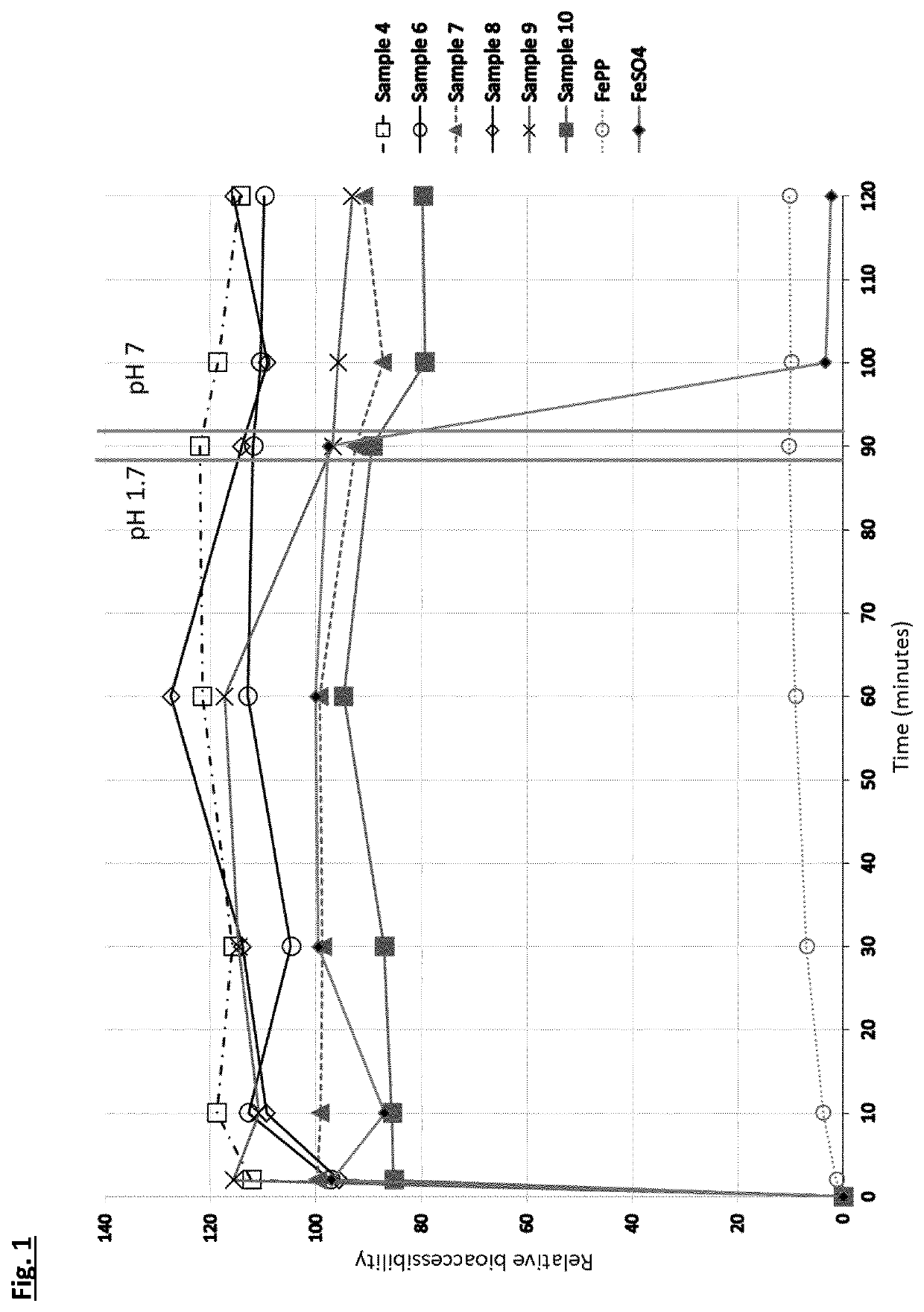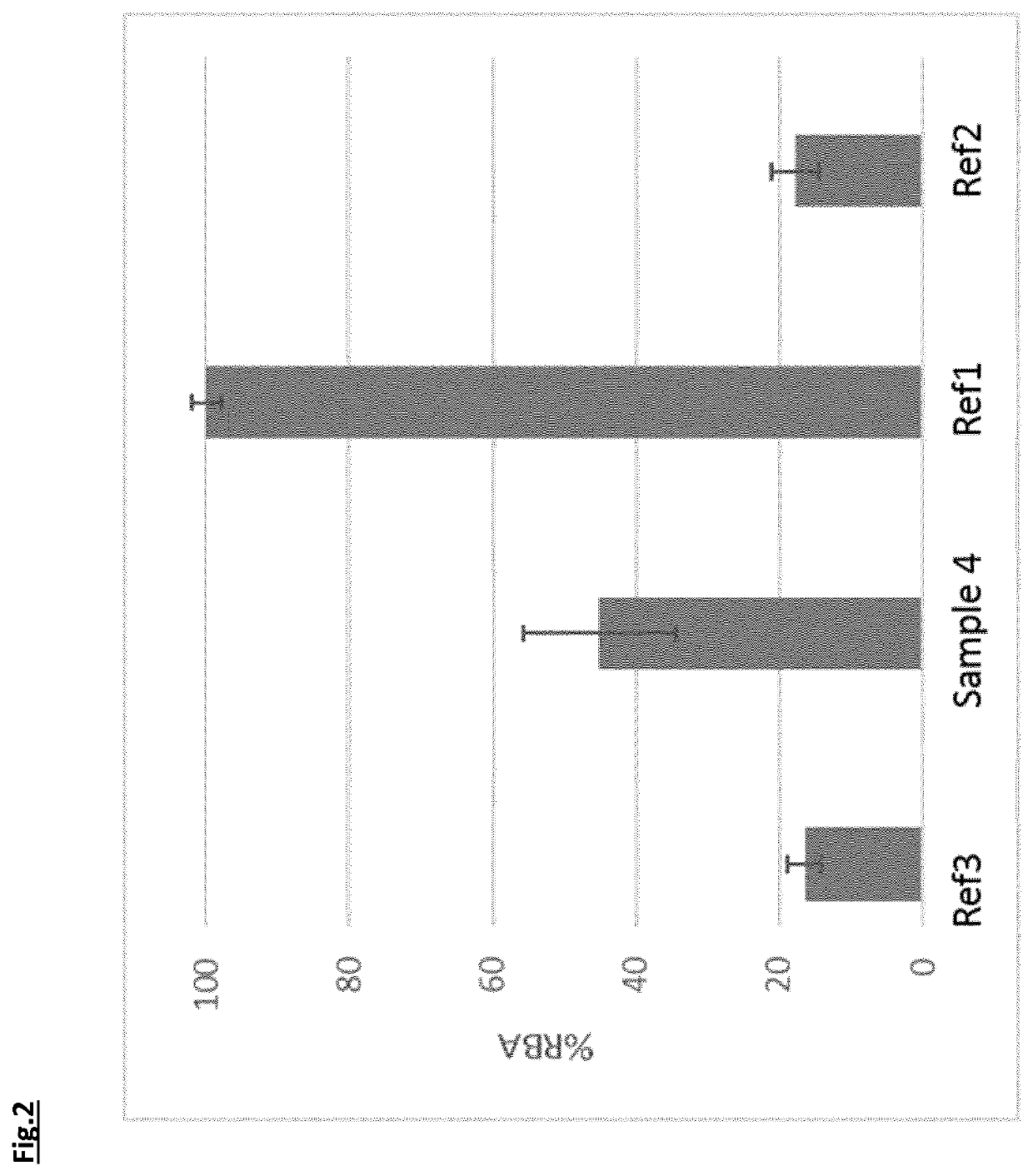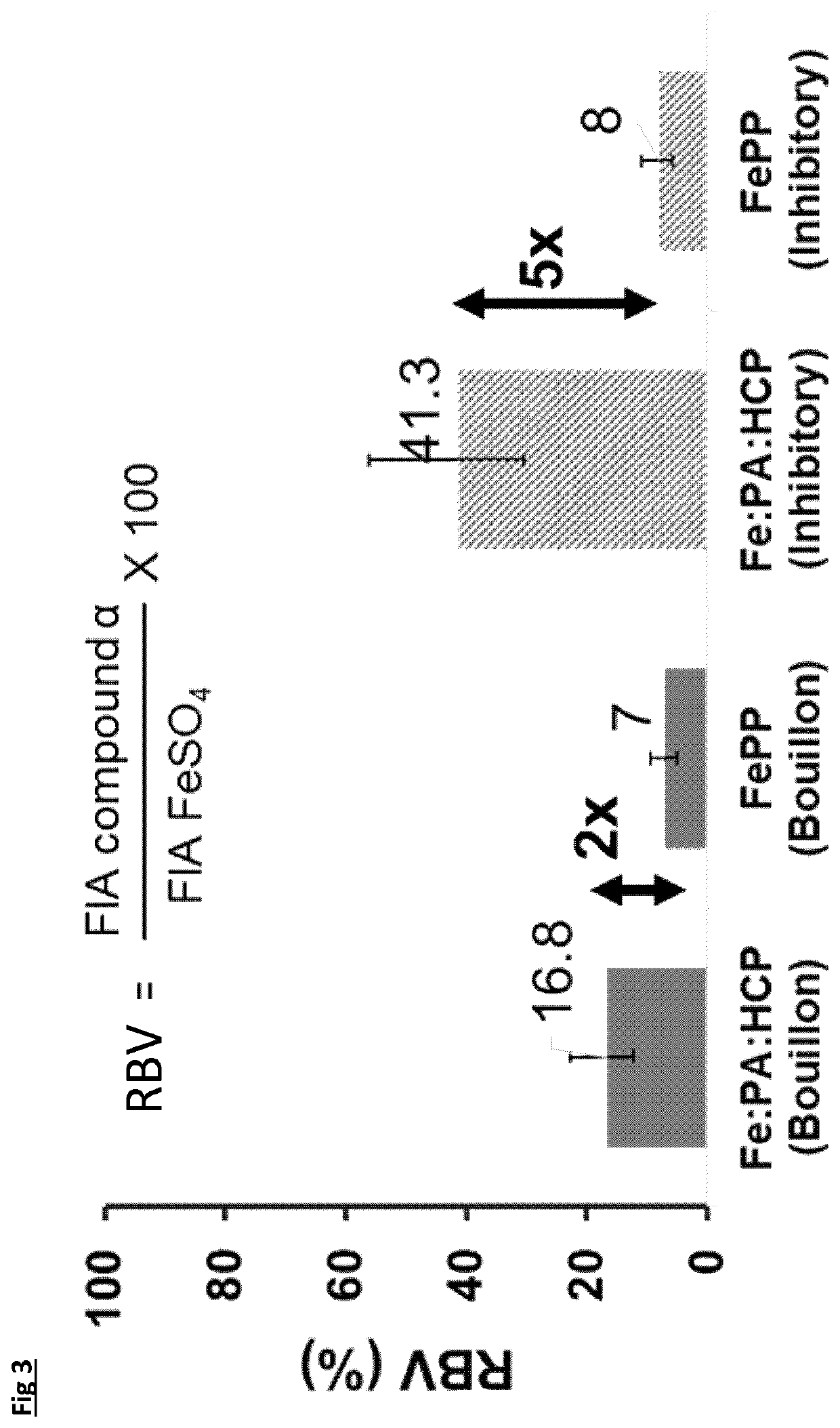Iron-fortified food composition
a technology of iron-fortified food and composition, which is applied in the direction of drug compositions, peptide/protein ingredients, extracellular fluid disorder, etc., can solve the problems of difficult human digestion, achieve minimal effect on colour, reduce toxicity, and improve stability
- Summary
- Abstract
- Description
- Claims
- Application Information
AI Technical Summary
Benefits of technology
Problems solved by technology
Method used
Image
Examples
example 1
of the Complex
[0103]A double jacketed reactor was used to prepare the complex. The reactor was cooled down to 0° C. and phytic acid (Tongxiang Xinyang Food Additives Co., Ltd.) (solution 50%) in 40 mL water (MilliQ) was added under stirring (500 rpm). The temperature of the reactor was kept at 0° C. and ferric sulphate solution (Dr. P. Lohmann GmbH KG) in 40 mL water (MilliQ) was added drop-wise using a peristatic pump over at least 45 min. Once the solution was limpid (transparent), a protein hydrolysate in 30 mL water (Milli-Q®) was added and the mixture stirred for at least one hour. The temperature was then increased to 7° C. and the pH adjusted by a drop-wise addition of a solution of ammonium hydroxide (NH4OH, 30%) until solubilisation of the complex (around pH 7.0, see table 1). The mixture was then pasteurized (65° C., 30-40 min) and freeze-dried.
[0104]Twelve samples were prepared with different levels of phytic acid, Fe(III), ammonium hydroxide and protein hydrolysate. The ...
example 2
ange in Iron-Fortified Bouillon
[0108]Commercial Maggi Chicken Bouillon (Nestle Nigeria) containing curcumin was iron fortified by the addition of iron (III) complexes from Example 1, as well as ferrous sulphate (Dr. P. Lohmann GmbH KG) Ref1, and ferric pyrophosphate (Dr. P. Lohmann GmbH KG) Ref2. The amounts were chosen to provide approximately 5.5 mg of iron per 6.55 g of bouillon powder. A further sample without iron fortification was also prepared in the same manner. All samples were reconstituted in 250 mL of boiling water and kept at 60° C. for a minimum of 30 minutes.
[0109]Colour measurements were performed in 2.6×1 cm quartz cuvettes using an XRite ColorEye 7000A colorimeter. The colorimeter was set up with a D65 light source, 10 degree observer angle, specular component included and Large area View (LAV). The colour difference between the beverage with no iron salt and the iron-fortified beverages was measured for each material and expressed as ΔEab* using the CIELAB colour ...
example 3
Bioaccessiblity Tests
[0112]For iron fortificants, in-vitro dissolution in gastric conditions is considered a good indicator of the relative biological value (i.e., bioavailability) [Comparison of in-vitro, animal, and clinical determinations of iron bioavailability: International Nutritional Anemia Consultative Group Task Force report on iron bioavailability, Am J Clin Nutr 1989; 49:225-38]. The experiment consists of measuring the free iron concentration in 0.02M HCL (with nominal pH of 1.7 units) under orbital agitation at 37° C. for 90 minutes. After 90 minutes the pH is adjusted to neutral with 1M NaOH and the concentration determined for another 30 minutes at the above temperature. The initial period at pH 1.7 is to simulate stomach digestion and the period at pH 7 simulates the intestine tract.
[0113]A selection of the complexes from Example 1 (samples 4, 6, 7, 8, 9 and 10) were compared to ferrous sulphate and ferric pyrophosphate. The target of 60 mg / L was fixed for all sampl...
PUM
| Property | Measurement | Unit |
|---|---|---|
| mass ratio | aaaaa | aaaaa |
| mass ratio | aaaaa | aaaaa |
| mass ratio | aaaaa | aaaaa |
Abstract
Description
Claims
Application Information
 Login to View More
Login to View More - R&D
- Intellectual Property
- Life Sciences
- Materials
- Tech Scout
- Unparalleled Data Quality
- Higher Quality Content
- 60% Fewer Hallucinations
Browse by: Latest US Patents, China's latest patents, Technical Efficacy Thesaurus, Application Domain, Technology Topic, Popular Technical Reports.
© 2025 PatSnap. All rights reserved.Legal|Privacy policy|Modern Slavery Act Transparency Statement|Sitemap|About US| Contact US: help@patsnap.com



